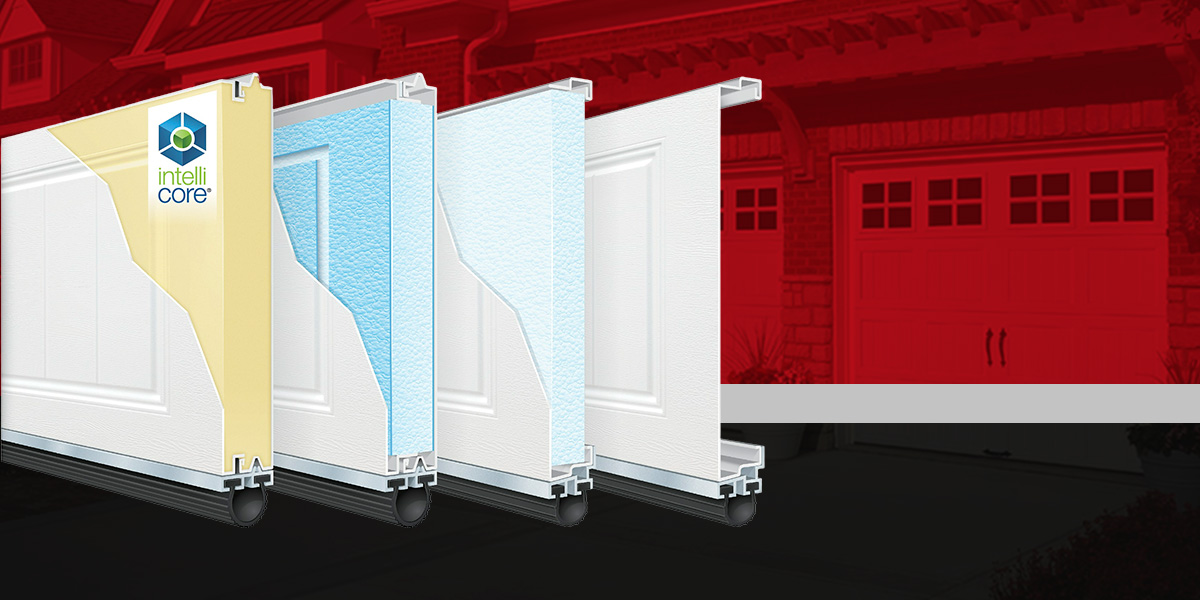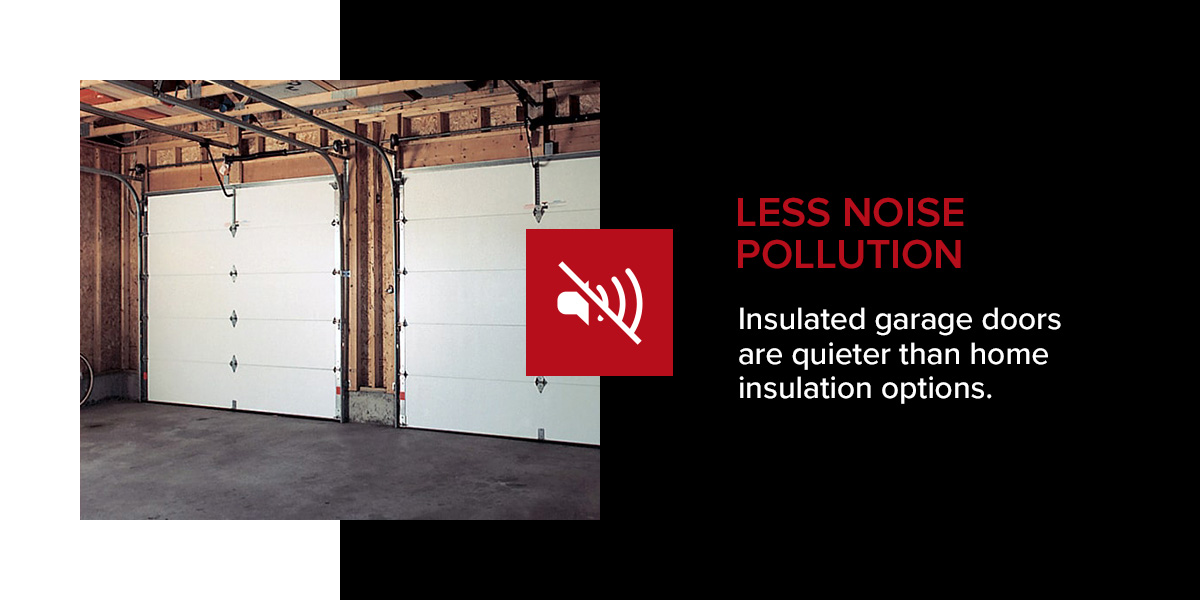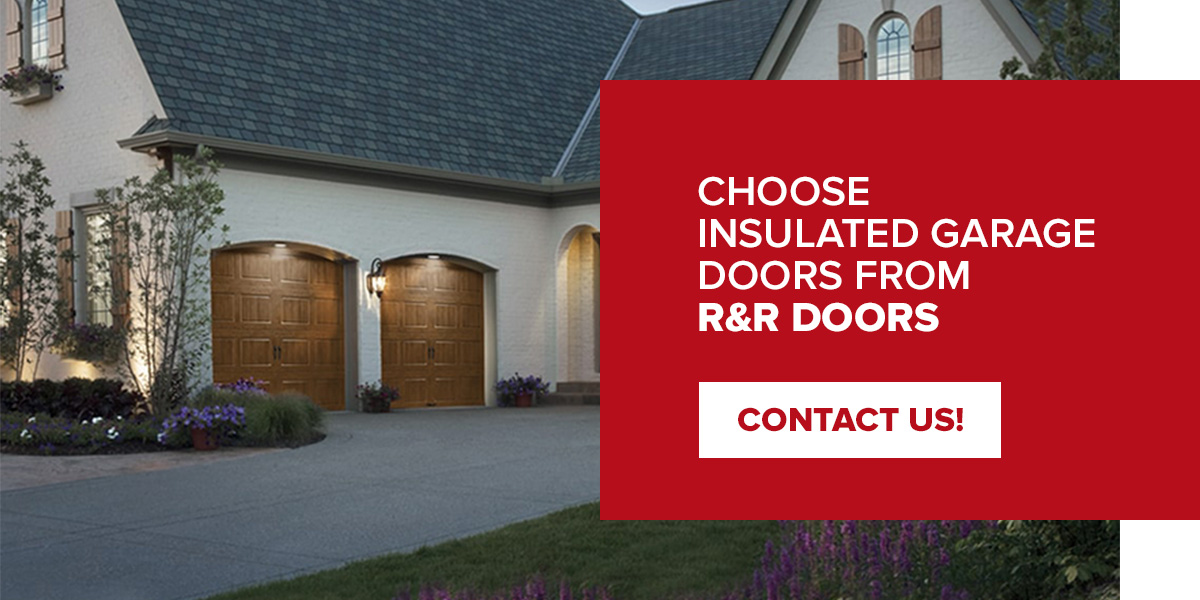
As homeowners, we’re always looking for ways to be energy efficient and make long-term investments in our homes. Garage door insulation may not be the first thing that comes to mind, but insulated garage doors make a difference. Learn more with some of these frequently asked questions about garage door insulation.
Table of Contents
Why Should I Get an Insulated Garage Door?
There are many reasons to consider insulating your garage door. The best insulated garage doors will help your home by offering these benefits:
- Be more energy efficient: Garage doors are a huge source of heat loss, which is not great for energy efficiency. As we all focus more on energy efficiency, insulating your garage door is yet another way to make your mark.
- Gain higher R-value: The higher the R-value, the better the materials in the overhead door retain heat.
- Keep your garage a comfortable temperature year-round: Keep your garage warm when the temperatures dip low. Insulation also helps keep out the heat during the summer.
- Eliminate noise pollution: The better your garage door is insulated, the less noise it lets through from your garage and outside of it.
How Do I Insulate a Garage Door?
You can choose the DIY route when it comes to insulation. There are two options you can take here — purchase an installation kit or buy precut garage door insulation panels.
A fiberglass batting kit could be the right choice if you’re looking for the most practical DIY insulation method. You could also look at expanded polystyrene panel foam. You can cut it to your desired size and attach it to the horizontal railings on your door. You’d have to be precise to maximize the value of your insulation when using this method.
Step-by-Step Guide for Installing Garage Door Insulation
When embarking on a DIY installation, add a bottom seal, some doorstop weatherstripping and the insulation to ensure good temperature regulation. Have a look at our step-by-step instructions for installing a fiberglass batting kit. Make sure you have a tape measure, utility knife, scrap plywood, a straightedge ruler and a dust mask.
1. Install the Retainer Pins
Between the horizontal rails of the garage door and about a foot from the edge of each panel, install the retainer pins. Peel off the backing and add two pins per panel.
2. Cut the Batting
Now, you’ll cut your batting to size with these steps:
- Measure both the height and width of each door panel, adding an inch on every side.
- Roll your batting out on scrap plywood, ensuring the vinyl side is facing down.
- Measure and mark your cutting lines.
- Compress the insulation with a straightedge.
- Use your utility knife to cut the batting to size.
3. Lock the Batting Into Place
With the insulation cut, it’s time to install it:
- Line your batting up in the middle of each panel, attaching it with the vinyl side facing into the garage.
- Push it against the retaining pin until the pin punctures through.
- Push the retaining cap onto the pin until you hear a click.
4. Test Your Garage Door Balance
Test the balance of your overhead door after adding the insulation to it. Lift the door halfway up and carefully let it go, staying out of the way of the door’s path. If your garage door stays where it is, it’s level. If it moves in either direction, you’ll need a professional garage door company to fix the spring tension.
Should I Buy an Insulated Garage Door?
To ensure your insulation is the most effective and give your garage an upgrade at the same time, you may want to consider buying an already-insulated garage door instead of going the DIY route. The purchase means a lot less hassle for you, and you can transform your garage into a masterpiece your neighbors will admire when they walk past your home.

Choosing to purchase an insulated garage door has many benefits for you and your home, including:
- No guesswork when it comes to R-value: With a garage door designed to provide you with the best possible insulation for your budget, you know what you’re getting.
- No added weight to your garage door: DIY insulation can make your door heavier, which puts extra strain on the motor. Professional installers can adjust your opener springs to accommodate a ready-insulated garage door, so the system functions correctly.
- Many different options: Insulated garage doors are in high demand, and you can find one that fits seamlessly with your home’s aesthetic and energy-saving needs.
- Less noise pollution: Insulated garage doors are quieter than home insulation options.
- Added strength: You can rest assured that your insulated garage door is stronger and stands up better to the elements.
If you’re already looking to replace and upgrade your garage door, buying one of the best insulated garage doors you can afford makes sense. If you’re considering a new purchase in the future, keep insulated options in mind for when you’re ready.
What Are the Pros and Cons of Garage Door Insulation?
There are countless benefits to having an insulated garage door, especially when you live in a cold climate that requires more temperature regulation.
Pros of Insulated Garage Doors
Getting an insulated garage door comes with these benefits:
- Make using your garage more pleasant: If you frequently use your garage as an office, gym or hobby area, regulating the interior climate will make these activities infinitely more enjoyable.
- Enjoy a comfortable temperature in the space above: By maintaining the temperature inside the garage, you won’t have an overflow of hot or cold seeping into the rooms in your home. With proper insulation in the garage, rooms above the space will feel more comfortable, and you won’t have to put as much energy into heating or cooling them.
- Gain extra space for storing your plants: If you love to garden, there’s never enough space for all your plants. Regulating the temperature in your garage gives you even more freedom to exercise your green thumbs.
- Increase the value of your home: A high R-value and increased energy efficiency can make your home more valuable should you choose to sell.
- Protect items in your garage better: The regulated temperature and protection from the elements give your stored items a longer life span.
Cons of Insulated Garage Doors
Keep these factors in mind when considering an insulated garage door:
- They can be an investment: Insulated garage doors come at an upfront cost, but the energy savings can help offset that over time.
- Leaving your garage door open makes insulation less effective: Insulated garage doors work best if they’re closed often.
Choose Insulated Garage Doors From R&R Doors
If you’re looking to upgrade your home with insulated garage doors, we can guide you through the process. We’ll install and maintain your doors to always be in the best working order.
R&R Doors is a family-owned business that has been in operation since 1986. Our experience and attention to detail mean we have a massive selection of residential garage doors and quality installation services. We stand behind our installations and service work and will always be there to assist you whenever you need. Feel free to contact us to learn more.

